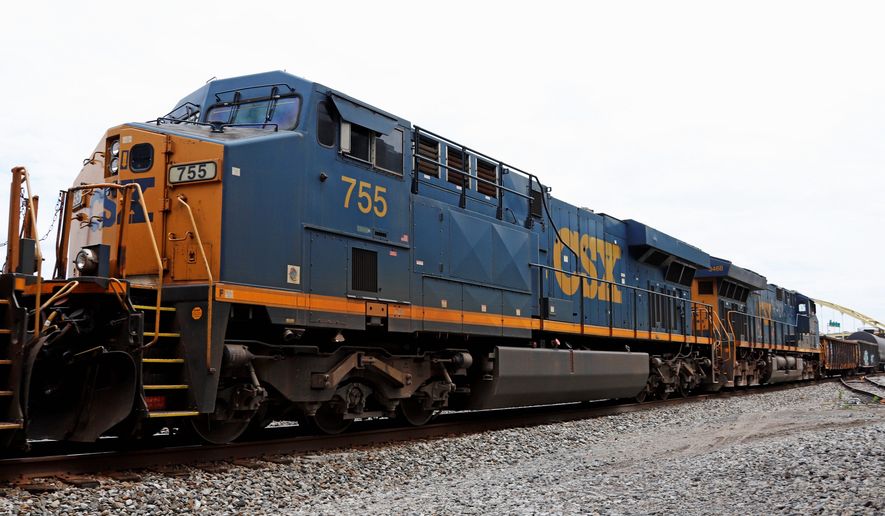U.S. freight trains have been growing up to three miles long, creating lengthy delays at railroad crossings for emergency responders and raising concerns about potential derailments, according to federal auditors.
What’s more, the federal government still lacks the ability to monitor this trend, according to the Government Accountability Office.
“In recent years, railroad workers and local communities have expressed safety concerns related to longer freight trains, and recent accidents involving such trains are currently under investigation,” the GAO said in a report this month.
After two major derailments that led to toxic spills in 2017, the Federal Railroad Administration (FRA) and the National Transportation Safety Board (NTSB) both studied the braking capabilities of longer train and which parts of the country experience frequently blocked railroad crossings.
The FRA, which sets freight train regulations, currently has no “documented strategy” for sharing the results of its research with stakeholders “to ensure the safe operation of longer freight trains” for Class 1 freight firms, the GAO said in its report.
Class 1 companies have annual operating revenues of $450 million or more. Seven are in operation: BNSF Railway, Canadian National, Canadian Pacific, CSX Transportation, Kansas City Southern, Norfolk Southern and Union Pacific. Together, they moved more than 1.5 billion tons of goods across the country in 2017, and account for more than 90% of annual railroad-freight revenues and 90% of railroad employees.
There are no federal regulations on maximum train length, so firms carry as many cars they want.
A Union Pacific spokesperson has said that longer “trains maximize crews, locomotives, fuel and other resources,” while CSX has noted that longer trains are a “tried and proven way to increase efficiency.”
“While the average length of trains operated by private freight railroads has gradually grown over time, the increase has been modest, varies significantly based on the territory in which a railroad operates and in no way correlates with decreased safety performance,” the American Association of Railroads told The Washington Times.
CSX declined to comment on the GAO report, but Union Pacific said it is streamlining operations to move rail cars through communities more safely and efficiently.
“Adding rail cars to already scheduled trains results in fewer trains traveling through communities, reducing the number of times people stop for passing trains,” Union Pacific spokeswoman Raquel Espinoza said in an email. “We will continue working with federal agencies and communities to find solutions that ease traffic congestion, as one train takes several hundred trucks off congested highways.”
According to the GAO, train lengths in 2017 averaged 1.2 miles to 1.4 miles long, with one firm saying it operated a 3-mile-long train twice weekly. Longer trains block railroad crossings for longer times, creating obstacles to police and other emergency responders. They also prompt “unsafe pedestrian behavior,” including people climbing through stopped trains.
As many as 22 freight trains pass daily through the town of Mount Victory, Ohio, the GAO noted. Each day a nearly 3-mile-long train blocks four to five crossings simultaneously as it passes through, isolating a large section of the community.
The impact of such long trains on the more than 211,000 railway crossings in the country is a concern to the National League, GAO noted.
The GAO report and the FRA study came after Congress in 2017 pushed for studies in the wake of the derailment of a 178-car CSX freight train in Hyndman, Pennsylvania. More than 1,000 residents within a mile radius of the accident were forced to evacuate their homes after rail cars containing propane and sulfur caught fire.
That same year, a CSX train with 192 cars — nearly 2 miles long — spilled hazardous molten sulfur after derailing in Lakeland, Florida.
• Dan Boylan can be reached at dboylan@washingtontimes.com.




Please read our comment policy before commenting.